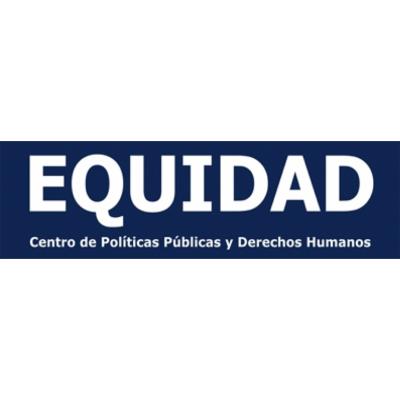Testimonies: Experiences from the pilot phase
Indigenous communities are first in line to assess the level of implementation of their rights. Therefore the Indigenous Navigator Community Questionnaire to monitor the UN Declaration of the Rights of Indigenous Peoples has been designed as a tool for indigenous communities as collective entities to monitor to what extend, in their experience, they are fully able to enjoy their human rights.
During the pilot phase of the Indigenous Navigator project 2013-2016, the community questionnaire was tested with a number of indigenous communities in Nepal, Thailand, Peru, Suriname, Kenya and Cameroon.
We have gathered some input from pilot partners in Asia, Latin America and Africa on how they applied the Indigenous Navigator at the local level and what they found most valuable in using the tools.
Know more about the pilot phase experiences
Nepal
In Nepal, two distinct indigenous communities were selected for training and surveys in the pilot phase, namely the Botes in Chitwan and the Thakalis in Mustang. The two indigenous ethnic groups were chosen to reflect the diversity of indigenous peoples in Nepal and the varying issues they are encountering. The Bote and Thakali are two out of the 59 indigenous ethnic groups that are officially recognised. Indigenous peoples, also known as adivasi janjatis, constitute 35.8 % of the total population in Nepal. This official figure is contested by indigenous peoples who claim to represent around 50 percent of the total population.
The indigenous Botes community in Chitwan is a fishing community who are experiencing a range of human rights violations related to their customary lands and territories. The State’s establishment of Chitwan National Park in 1973 continues to have severe consequences for the indigenous Bote community. The Bote has lost control over their lands and territories. The management of the National Park was left to state actors, army, political elites, and the ruling class and without consideration of the Bote’s relationship to their traditional lands.
The Nepalese population is comprised of 125 caste and ethnic groups, but only 59 are officially recognised as indigenous peoples. Nepal has ratified ILO Convention 169 and adopted the UN Declaration on the Rights of Indigenous Peoples. However, the constitution denies the collective rights and aspirations for identity-based federalism of indigenous peoples. Nepal’s indigenous peoples are thus still facing a number of challenges, including poor access to basic social services, ethnic discrimination and lack of consultations and free, prior and informed consent in matters that affect their lives and future.
In contrast, the Thakalis are one of the few indigenous ethnic groups in Nepal who are able to maintain their traditional institutions and practices. However, their practices have not received adequate support and recognition from the State. Their marginalisation to social, economic and political opportunities threatens the sustainability of their traditions and political system, which further affects their control over lands, territories and natural resources.
The pilot phase in Nepal focused on contextualising the global Indigenous Navigator monitoring tools and indicators to the situation of Nepal. The community questionnaire was translated into Nepali and applied in Chitwan with specific focus on violation of indigenous women's rights, and in Mustang where emphasis was put on the traditional institutions of Thakali communities.
“The communities found the project relevant, particularly because they were directly involved in the process of assessing their human rights situation”, says Tahal Thami, Director of LAHURNIP, one of the local partners for the Navigator pilot project in Nepal.
It sparked an idea on how to engage with duty-bearers and donor communities for a self-determined development.
The method of data collection used turned out to be a rewarding awareness-building activity in terms of knowing and understanding indigenous rights better. The data collection provided space for communities involved to know more about their rights, including both domestic laws and international conventions that apply to them”, relates Tahal Thami about what was the most valuable lesson learned from the pilot experience.
“Using the Navigator tools also sparked an idea on how to engage with duty-bearers and donor communities for a self-determined development. For one, it opened an opportunity to reflect on the concept of poverty. Poverty was realised to be not only about economic concerns in pecuniary terms, but more so about lack of other intangible matters such as powerlessness, illiteracy and having no voice, among others,” says Tahal Thami.
In Nepal, the pilot project was implemented by the Lawyers’ Association for Human Rights of Nepalese Indigenous Peoples (LAHURNIP) and the National Indigenous Women’s Federation (NIWF) with support of Asia Indigenous Peoples Pact (AIPP).
Meet the Navigator partners from Nepal
Lawyers’ Association for the Human Rights of Nepalese Indigenous Peoples (LAHURNIP) is an indigenous lawyers’ association working to promote and defend the rights of indigenous peoples in Nepal. It focuses on strategic litigation, documentation and reporting at national and international levels, research and policy advocacy activities as well as capacity building, collectively with indigenous peoples’ organizations (IPOs), non-governmental organizations (NGOs) and other stakeholders. It actively engages in the Indigenous Peoples Human Rights Defenders (IPHRD) Network of AIPP and has been a partner since the pilot testing of the Indigenous Navigator sponsored by the European Union (2013-2016).
National Indigenous Women’s Federation (NIWF) is a Kathmandu-based umbrella organisation of Adivasi Janajanti (indigenous nationalities) women organisations that was established as a federation in 1999. It primarily aims to ensure women’s rights to participate in all State structures with specific emphasis on their distinct identity as indigenous women. NIWF was part of the pilot phase of the Indigenous Navigator project.
Peru
In the pilot phase in Peru, the indigenous navigator community questionnaire was applied to the Wampis nation, an indigenous people of the northern Amazon, with an estimated total population of 15530 people. The Wampis recently decided to exercise its right to self-government, through declaring an autonomous territorial government. Although the Peruvian State has ratified ILO Convention No. 169, it does not recognize indigenous peoples as legal subjects as such, only as local communities. This means that the Autonomous Territorial Government of the Wampis Nation is not legally recognised by the State and thus only able to exercise is right to autonomy "de facto”.
The community surveys were applied in three communities in each of the two River basins that belong to the territory of this nation. In the district of Santiago, Kanús River, Amazonas Region: Annex Port Galilee (820 inhabitants), Candungos (920 inhabitants) and Huabal (450 inhabitants) , and in the district of Morona, Kankaim River, Loreto Region: Bagazán (156 inhabitants), Puerto Luz (80 inhabitants) and Caballito (320 inhabitants).
There are four million indigenous people in Peru. They comprise 55 peoples who speak 47 distinct languages. Peru has ratified ILO Convention 169 and adopted the United Nations Declaration on the Rights of Indigenous Peoples. However, indigenous peoples in Peru are still struggling with the lack of consultation and Free, Prior and Informed Consent regarding extractive industries in their territories. They also face the consequences of climate change, poor access to basic social services and ethnic discrimination.
The selection of communities was decided in agreement with the authorities of the community organizations. The communities where the surveys were carried out are representative of the variety of political and economic articulations maintained by the Wampís people with the Peruvian State in its different levels and with other external actors in the region.
"The participation of women and young people in the experience of training and implementation of the surveys has had a very positive result. The application of the instrument allow the survey participants to make a systematic assessment of their situation on the basis of the rights that should be guaranteed by the State. It has the capacity to be used as a reflection tool for action", explains Shapiom Noningo Sesén, Technical Secretary of the Autonomous Territorial Government of the Wampis Nation.
The experience also served to create a space for training of the Wampis on their rights as indigenous peoples, an area in which not all community organizations are equally up-to-date
According to Noningo, one of the conclusions from the surveys were that although the current national government has promulgated Law 29785 and regulation DS No 001-2012-MC on prior consultation, in practice it is merely a "good intention" that is not applied at the community level.
The return of the survey results was done within the framework of the 1st Assembly of the Wampis Nation held in the community of Soledad in the Kanus River basin (26-29 November 2015), an event at which the Wampis Autonomous Government was constituted. This allowed for data validation with delegates from numerous Wampis communities including communal authorities, newly elected iirunin (assembly members), teachers, women, and young men and women.
Inspired by the experience with the use of the Indigenous Navigator, one of the conclusions of the Assembly was that the Wampis should continue to monitor compliance with laws and regulations in order to enforce compliance more effectively, especially at the local (district) level.
Meet the Navigator partners from Peru
Peru Equidad is a civil society association, working to monitor, defend and promote human rights and the rights of indigenous peoples in Peru through investigation, documentation, capacity building and strategic litigation at local, national and international level. It was a partner in the pilot testing of the Indigenous Navigator sponsored by the European Union (2013-2016). In the second phase of the project, Peru Equidad will continue coordinating the training in and application of the indigenous navigator tools in the Amazon region, providing training and technical assistance to local indigenous organisations in Northern Amazonas.
ONAMIAP is a national indigenous women’s organisation in Peru. For the second phase of the Navigator project, ONAMIAP will be in charge of planning local training, facilitation and monitoring of pilot projects in indigenous communities in the central Peruvian Highlands. ONAMIAP will also be an important partner for advocacy of and dialogue with duty bearers and stakeholders at the national level.
Kenya
Project activities were piloted across a number of site amongst Maasai pastoral indigenous peoples of Kenya and northern Tanzania. Specifically, the sites included a cross-border site - Olloonkiito, and Namanga in northern Tanzania and southern Kenya respectively, Olkaria/Suswa and Enkutoto Group Ranch in Narok County, Southern Kenya.
The indigenous peoples in Kenya include hunter-gatherers such as the Ogiek, Sengwer, Yaaku Waata and Sanya, while pastoralists include the Endorois, Turkana, Maasai, Samburu among others. Kenya has no specific legislation on indigenous peoples and has yet to adopt the UN Declaration on the Rights of Indigenous Peoples. The indigenous peoples in Kenya face land and resource scarcity and insecurity, poor access to social services and ethnic discrimination.
Overall, the key issues of concern within the pilot sites included Wildlife Conservation interests and Pastoralists Land tenure security including cross-border mobility; security of land tenure, threat to social and political identity, health and environmental concerns related to geothermal exploitation; and collective ownership versus private/individual interests.
The activities undertaken involved a baseline survey at the pilot community and policy review at the national level. The survey was geared towards assessment of the level of awareness and implementation of the applicable human rights instruments at the community level and national efforts to domestic the said instruments.
The community questionnaire was applied by trained indigenous peoples facilitators. The surveys were done through focus group discussions and by interviewing key informants representing both young and old, men and women as well as village authorities and experts based on the Indigenous Navigator community questionnaire and tools. The analyzed results of the baseline survey were translated into a composite community and national level indices ultimately giving a snapshot of the indigenous peoples’ rights situation in the pilot country and community.
“The Indigenous Navigator tools provided a useful framework for indigenous peoples to systematically monitor the level of recognition and implementation of their rights.” says Stanley Ole Kimaren Riamit, Executive Director of ILEPA, one of the local partner organisation for the pilot phase in Kenya.
In addition to the monitoring and assessment of the implementation of the UN Declaration on the Rights of Indigenous Peoples (UNDRIP) in the five Maa communities surveyed, the use of the Navigator tools helped raise the Maa communities´ awareness on their rights as indigenous peoples.
Before undertaking the survey, ILEPA and MPIDO provided training of Maa community representatives on the content of the UNDRIP and on the outcome of the World Conference on Indigenous Peoples and how they relate to other core human rights instruments.
“Overall there was a low level of awareness on the existence of the various human rights related instruments, but also great variances across gender, age, level of education, exposure and geographical location. Women and elders, especially those who cannot read and write have a very low level of awareness”, explains Stanley Ole Kimaren Riamit from ILEPA.
The indigenous Navigator appears to be one of the greatest efforts to establish a framework and tool to translate textual gains in Indigenous peoples rights into practical recognition, respect and protection of human rights
The overall reactions from the Maa focus group discussions and key informants that took part in the surveys was the realisation that their rights as indigenous peoples are far from being implemented/respected.
“The indigenous Navigator tools helped reveal the glaring disconnects between national government’s positive legislation on IPs, international commitments related to human rights including IPs rights, and actual implementation on the ground”, explains Stanley Ole Kimaren Riamit.
Now embarking on the second phase of the Navigator project, ILEPA is looking forward to promoting the tools with new communities and explore how to use data for improved advocacy and awareness raising.
Meet the Navigator partners from Kenya
ILEPA (Indigenous Livelihoods Enhancement Partners) is a community-based indigenous peoples NGO working with human rights, community health and development for Maasai pastoral communities in Narok County, Southern Kenya. ILEPA was a partner to the pilot testing of the Indigenous Navigator sponsored by the European Union (2013-2016). In the second phase, ILEPA is implementing the project in Kenya in collaboration with MPIDO, contributing to the training of communities and monitoring of pilot projects. It will also be heading national level advocacy and communication of results.
MPIDO is a leading indigenous peoples’ NGO in Kenya, working with development and human right for pastoralist organisations. MPIDO was a partner in the pilot testing of the Indigenous Navigator sponsored by the European Union (2013-2016) and will remain one of the implementing partners in the second phase of the project in Kenya.
Contact
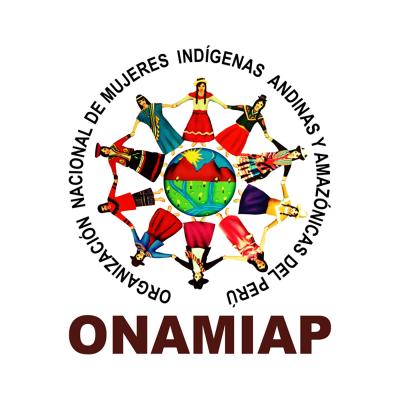
Organización Nacional de Mujeres Indígenas Andinas y Amazónicas del Perú (ONAMIAP)
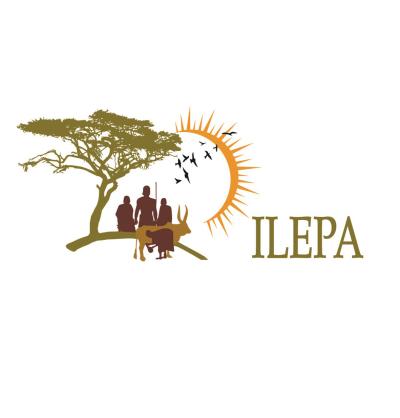
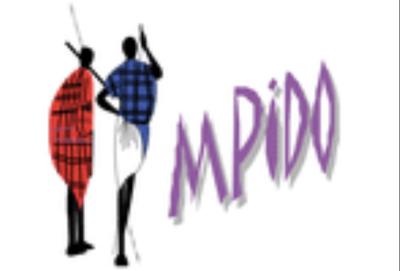
Mainyoito Pastoralists Integrated Development Organization (MPIDO)
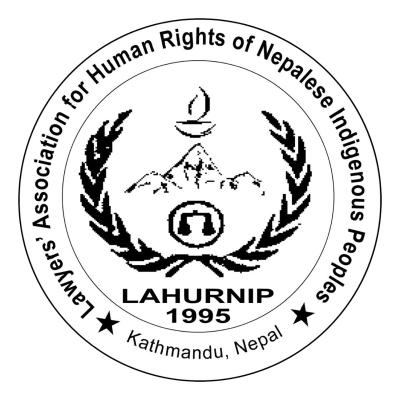
Lawyers' Association for Human Rights of Nepalese Indigenous Peoples (LAHURNIP)
